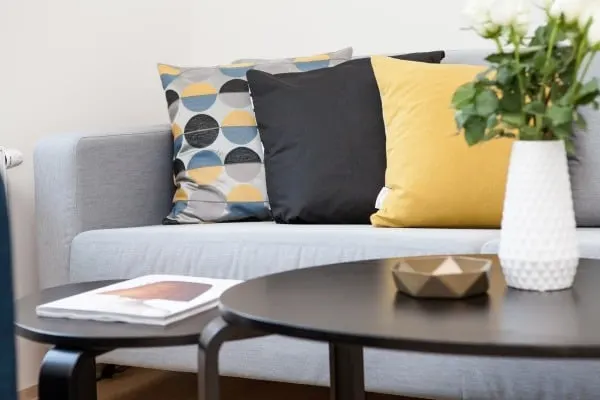
Interior design is often thought of as a matter of aesthetics, but it can also have a significant impact on well-being. Whether you are at home or at work, the environment you are in plays a crucial role in your well-being both physically and emotionally. Therefore even small changes in the surroundings you live in can make a huge difference to your overall happiness and health.
- Space layout
One of the aspects of interior design that can affect your well-being is the layout of your space. A well-designed layout can make a room feel larger, and more cozy, while a poorly designed layout can make a room feel cramped and uncomfortable. Properly placing furniture and decor can also help create a sense of flow and balance in a room, which can contribute to a sense of calm and relaxation.
- Ergonomics
It’s important that your furnishings bring you joy and comfort. That’s why many people prefer to refurbish their furniture rather than throw it away. As for new furniture, it should be carefully chosen, paying attention to material, design and comfort. In addition to the interior of the house, it is also worth taking care of the exterior comfort. Outdoor furniture manufacturers PARASOL provide a wide selection of outdoor furniture to set up a backyard. Although the company is based in Dubai, on their website you can find a catalog with a range of outdoor goods made from high quality materials. Furthermore, the company specializes in the production of outdoor furniture made from natural materials such as teak and rattan, which also have a positive effect on mental wellbeing. Ergonomics is another crucial aspect of interior design that can impact your well-being. Poorly designed spaces can lead to discomfort and even injury.
- The impact of light
Access to natural light is one of the basic attributes of emotional comfort and well-being, especially for those who spend a great deal of time at home or working remotely. Sunlight reduces depression and anxiety, and has a positive effect on productivity and sleep quality. When planning your own space, make sure that nothing obstructs natural light from entering the room.
- Color therapy
One of the ways in which interior design can affect how you feel is through the selection of colors. Settings such as colors, lighting and patterns directly affect your mood. By contrast, cool colors like blue and green tend to relax you and make you feel calmer. For instance, warm colors such as orange and yellow tend to be energetic and can help you feel more awake. Meanwhile, saturated and less bright colors such as emerald green might have an energizing effect. Therefore, when planning your room color scheme, consider not only personal color preferences, but also the function of a particular room.
- Getting in touch with nature
Incorporating natural elements into your design can also have a positive impact on your well-being. Studies have shown that being around plants can reduce stress, improve air quality, and increase productivity. Adding a few potted plants or a small indoor garden can not only bring some life to your space, but also improve your physical and mental health.
- Social interaction
Interior design can also affect your social wellbeing. A well-designed space can encourage social interaction and create a sense of community, whereas a poorly designed space can hinder communication and make people feel isolated. For example, a living room with comfortable seating and an open plan may be conducive to socializing and relaxing, while a cramped and cluttered room may make it difficult to relax or entertain guests.
Altogether, the way you decorate your home or workplace can have a significant impact on well-being. By paying attention to colors, lighting and room layout, you can create an environment that promotes physical, mental and emotional health. So the next time you’re thinking about remodeling, think about how it can positively affect your well-being and make a big difference.
- Sagittarius Man & Gemini Woman Love and Sex Compatibility - January 31, 2024
- Taurus Ascendant Rising Personality Traits in Men (Guide) - January 31, 2024
- How to Seduce and Attract a Sagittarius Man (Seduction Tips) - January 31, 2024
